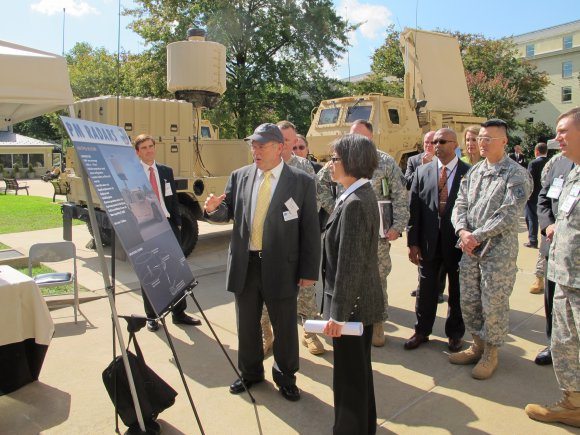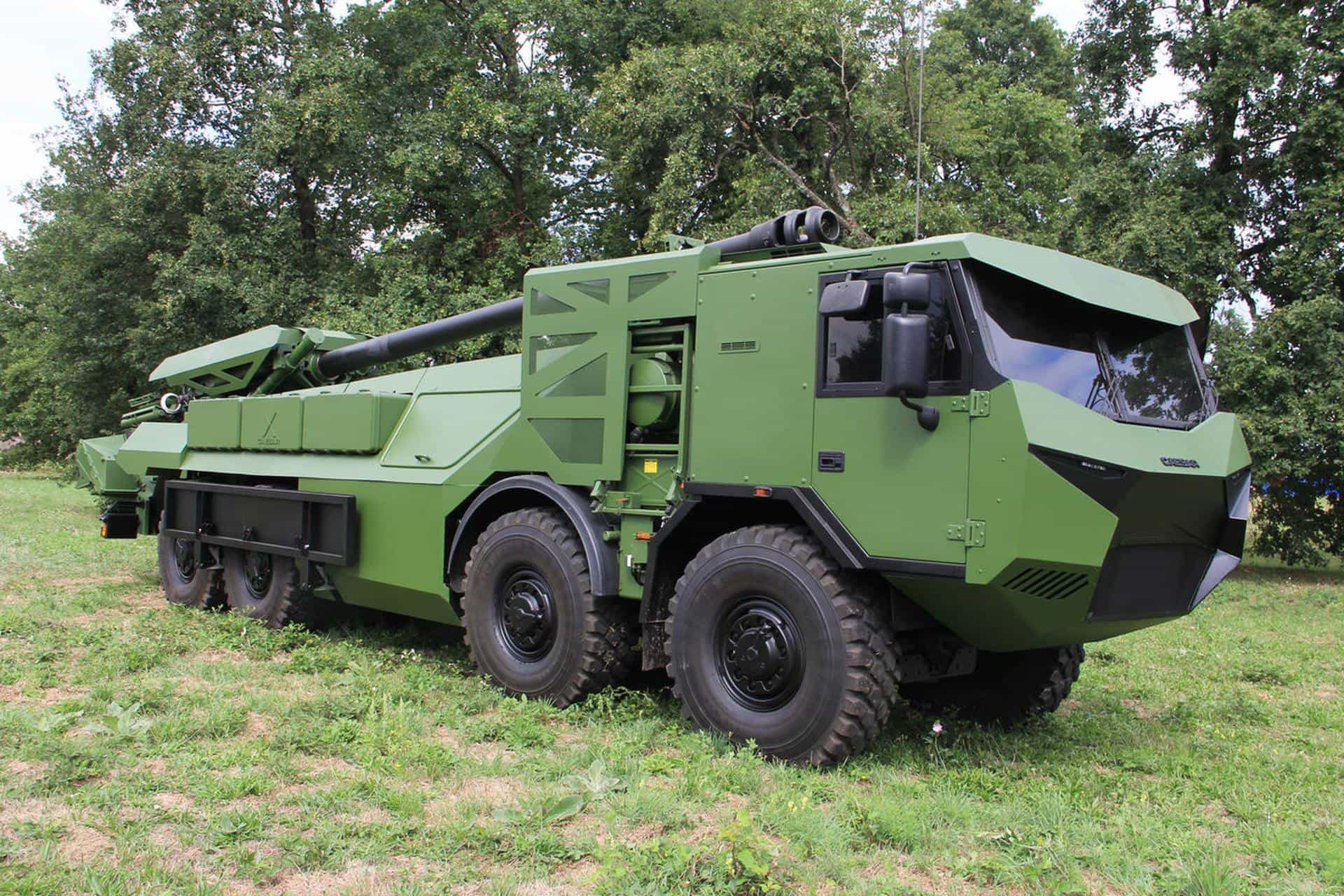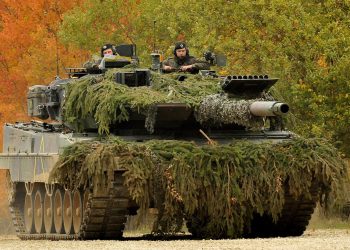The Army has begun fielding new radar systems to protect forward-deployed forces.
Several next-generation, mobile Counter Target Acquisition, or CTA radar systems are now able to provide Soldiers with a 360-degree protective envelope or warning capability against incoming enemy rocket, artillery and mortar fire, service officials said Oct. 10, at a Pentagon display.
The radar systems on display, the AN/TPQ-53 truck-mounted mobile radar system, and the Humvee-mounted AN/TPQ-50 Lightweight Counter Mortar Radar, incorporate a series of technological upgrades to prior iterations of deployed radar capability developed through Army and industry science and technology efforts.
The radars work by pulsing electromagnetic signals or radio waves across a particular area in various wavelengths and in various directions; once these radio waves bounce off of or hit an object in their path, they send back a return signal or small amount of electromagnetic energy, allowing radar operators to determine the range, elevation, size and speed of incoming projectiles.
“These radars systems give a lot of capability to commanders in the field, especially since we are not fighting a linear fight anymore,”said Chief Warrant Officer 4 Daniel McDonald, Training and Doctrine Command capability developer and requirements staff officer. “We’ve got a non-contiguous battlefield where the enemy can pop up anywhere. Commanders love the tactical flexibility that this gives them.”
Also, the CTA radar capability is able to predict the point of impact of a given incoming round by calculating or assessing its ballistic trajectory, said Lt. Col. Robert Thomas, product manager for radars. This information, determined with the help of specially engineered computer algorithms, allows radar operators to determine the point of origin and estimated point of impact related to incoming hostile fire.
The technological maturation of both the Q-53 and Q-50 radar systems, described as the cornerstone programs of record for the future, were heavily informed by an S&T effort beginning in 2002, called Multi-Mission Radar Advance Technology Objective, said Kris Gardner, director for Command, Control, Communications, Intelligence Portfolio, deputy assistant secretary of the Army for Research and Technology.
The goal of this effort, which involved Army and industry scientists and experts, was to develop a single mobile radar system able to simultaneously perform Air Defense Surveillance, Air Defense Fire Control, Counter Target Acquisition and Air Traffic Service missions under all geographical and operational conditions, Gardner explained.
“Many of the hardware, software and processing advances developed and demonstrated in the MMR S&T effort paved the way for the current Q-53 and Q-50 displayed Oct. 10,” Gardner added.
The Oct. 10 Pentagon radar display was organized to demonstrate the Army’s program of record CTA capability, Thomas said. At the same time, these CTA capabilities with Product Manager Radars are transferring management from Program Executive Office Intelligence, Electronic Warfare and Sensors to PEO Missiles and Space.
“This alignment presents a lot of opportunities for development because it will organize air defense radars under the same umbrella as the counter-fire radars,” said Thomas.
Both the Q-50 and Q-53 radars are configured to integrate with ground-based Counter Rocket Artillery and Mortar systems designed to protect forward operating bases. C-RAM provides an integrated system with Fire Control Radar capability engineered to detect, track and destroy incoming hostile fire.
The Q-53 is a C-130 transportable, truck-mounted Counter Target Acquisition radar system configured to provide 360-degree threat detection capability, Thomas and McDonald explained.
The Q-53 Program of Record, which achieved a formal milestone C production decision in February, was informed by earlier or legacy versions of a similar technology called the AN/TPQ-36 and AN/TPQ/37 radar systems.
“We improved the software and improved the overall hardware of the system, incorporating lessons learned from the earlier systems,” McDonald explained.
“We developed more robust gears, a rotating platform, an automated leveling system and an improved air cooled system.”
In fact, some of these technical improvements to the Q-53 substantially reduce the logistical footprint of the system, lowering the life-cycle costs by millions of dollars and making it easier to operate and transport quickly on a C-130 aircraft, Thomas added.
Previous versions of the capability, such as the AN/TPQ-36, required three trailers, three vehicles and a six-man crew; the Q-53 requires a four or five-man crew and includes a 60-kilowatt transportable generator and one support shelter vehicle, Thomas explained.
“This system is easier to emplace, especially in a high-optempo environment,” McDonald said. “Now it is all automated, so it reduces wear and tear on the crew and system. Also, the Q-53 enhances force protection. It uses an encrypted wireless network able to reach up to 1,000 meters away, so I can put myself in a tactical operations center, or TOC, or nearby shelter.”
While the Q-53 is configured to perform CTA radar missions locating the origin and impact of incoming fire, the hardware and software are engineered such that they could accommodate technical advances in capability as technology matures, Thomas said.
For instance, it is possible that the Q-53 could, through software upgrades, incorporate the ability to detect larger threats such as UAS, Cruise missiles and rotary or fixed-wing aircraft, Thomas said.
The Q-50 LCMR program of record, which emerged out of a quick reaction capability effort to quickly deploy radar able to protect forward-deployed forces on the move, has greater range capabilities and is more accurate than previous models of the technology, the Q-48 and Q-49 LCMRs. QRCs represent efforts to quickly get capability-enhancing technology to theater while simultaneously harvesting Soldier input and refining requirements for a traditional program of record.
“The Q-50 represents the third iteration of LCMR technology. It is designed so that it can mount multiple versions of the HMMWV or be mounted on a tripod,” McDonald added.
The Q-50 radar, now being delivered to the 101st Airborne Division, is effective out to a range of greater than 10 kilometers and a minimum range of 500 meters against rockets, artillery and mortar fire, Thomas explained.
At 500 pounds and 3.6 feet in diameter, the Q-50 is designed to be mobile, lightweight and rapidly deployable in support of early entry operations; it can be powered up by a 5-kilowatt generator or draw power from a Humvee. The cylinder-like radar structure electronically steers electromagnetic pulses across a 360-degree protective envelope, Thomas said.
“We can get this capability on the ground rapidly. Getting Counter-fire capability on a drop zone is very important to secure an area. You want to know where the threats may be,” said McDonald.
The Q-50 is engineered to work in tandem with and complement the longer-range, truck-mounted Q-53 radar by filling potential holes in its coverage areas, Thomas explained.










